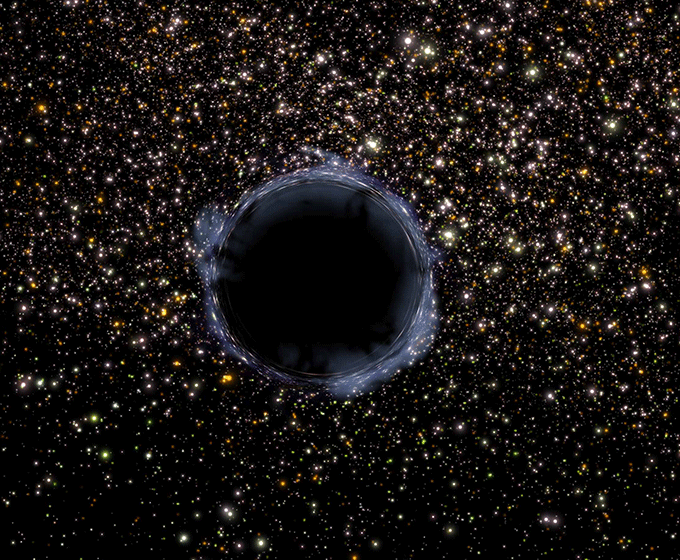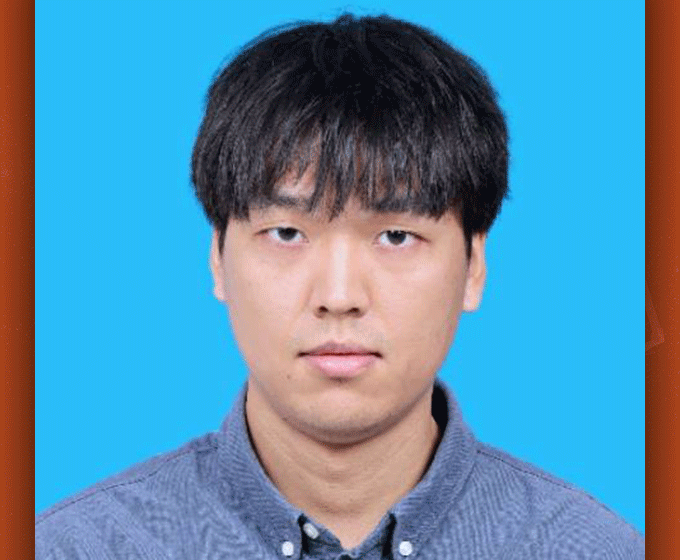
JUNE 26, 2024 — Lulu Zhang started thinking about proposal ideas to gain time on the James Webb Space Telescope (JWST) as soon as he arrived at UTSA as a post-doctoral fellow in the university’s Department of Physics and Astronomy in 2023.
Securing time on the telescope is a highly competitive process. The JWST is the largest and most powerful telescope in (and out of) this world, efficiently producing images and spectra of deep-space marvels with exquisite details. The telescope’s highly sensitive capabilities continue to amaze scientists in their journey to unfold the nature of the universe.
Zhang applied for time on the JWST in Cycle 3 through the General Observer Program. The cycle received 1,931 proposals, of which 253 were selected, including Zhang’s. The UTSA postdoc was granted 12 hours of observation time on the JWST.
A first-time proposer to the most oversubscribed telescope ever, Zhang is also the first from UTSA to be awarded time on the JWST as a principal investigator. With his time, the UTSA researcher will dive into supermassive black holes, which will help to understand the birth and evolution of galaxies. To do this, he is applying a revolutionary approach using polycyclic aromatic hydrocarbons (PAHs), commonly known as smoke, to study kinetic mode feedback of active galactic nuclei (AGN).
 Lulu Zhang.
Lulu Zhang.At the heart of the universe’s largest galaxies lies supermassive black holes that actively devour gas and dust, creating regions known as AGN. Kinetic mode feedback is the energetic feedback by AGNs. Zhang’s work to identify the energetic feedback via smoke will help the scientific community better understand the influence supermassive blackholes have on galaxy formation and evolution.
“I think it’s one of the most basic questions in the field of astronomy: How does a galaxy form and evolve? Previously, I carried out analysis using our group’s data but now it’s time to get my own data for my own observations. It’s very exciting,” Zhang said.
In the JWST’s first cycle of observations, 6,000 hours were awarded to researchers observing a range of targets, from near-Earth objects and comets to Giant Planets. Cycle 2 offered 5,000 hours to researchers investigating asteroids, exoplanets and cosmology. Much of the time awarded during Cycle 3, Zhang’s cycle, will support researchers searching for answers about the origins of the universe.
A month before deadline for proposals, Zhang came up with the approach, identifying PAHs as a viable and exciting avenue to diagnose the energy of galactic formations. He submitted target coordinates, how long it would take to look at them and the type of data he’d like to collect from the observations.
“This helps piece together our understanding of AGN, how the central black hole can affect the whole galaxy. We get a better understanding of the evolution of galaxies,” Zhang said. “Exploring galaxies is enjoyable but not that easy.”
In the coming weeks, Zhang will be contacted with the detailed sequence of his observations through a program installed on his laptop. He’ll enter codes that position the JWST to look at various wavelengths and upload them to the Space Telescope Science Institute in Baltimore, the location from where the JWST is operated. From there, a simulator will review Zhang’s coding before uploading it to the JWST.
The JWST will execute the code to collect this incredible data, and the data will travel one million miles from JWST through the Deep Space Network. The telescope’s observations will then make their way back down to Earth as data radioed to Zhang’s laptop, where he will begin his analysis.
UTSA faculty have made significant contributions to space sciences research in recent years. In 2023, UTSA astrophysicists partnered with the Subaru Telescope and the European Space Agency to capture one of the first-ever images of an exoplanet seen by the JWST.
That same year, NASA recognized UTSA faculty Xinting Yu with a Planetary Science Early Career Award, aimed at establishing a Planetary Material Characterization Facility. In 2022, UTSA astronomers played a pivotal role in the Event Horizon Telescope project, contributing to the first-ever image of black hole Sagittarius A*. UTSA faculty have also partnered on several NASA-funded small business innovation and technology transfer projects.
Zhang will work closely with UTSA astrophysics professor Chris Packham, an expert in the study of black holes. Packham regularly uses some of the largest telescopes on Earth for his research such as the instruments in Hawaii, Chile and La Palma, California. Additionally, he co-leads GATOS, a team of international scientists who were awarded time on the JWST telescope for research on black holes during the first two highly competitive cycles of observation.
“At this time, JWST is so powerful. It’s the most requested telescope in history and Lulu got time on the telescope on his first try,” Packham said. “It’s cool to think his keystrokes on his computer will be directly controlling JWST up there.”
UTSA Today is produced by University Communications and Marketing, the official news source of The University of Texas at San Antonio. Send your feedback to news@utsa.edu. Keep up-to-date on UTSA news by visiting UTSA Today. Connect with UTSA online at Facebook, Twitter, Youtube and Instagram.
Día en la Sombrilla, formerly Fiesta UTSA, is a festival hosted each spring as a part of Fiesta® San Antonio events. Sponsored by Roadrunner Productions, the event features music, food, confetti, games, event t-shirts, and more.
Sombrilla Plaza, Main CampusCovidence is a systematic & scoping review tool used to streamline the process of screening and reviewing articles. Using this software, research teams can easily import studies, perform automatic deduplication, and extract data using templates. This workshop will show attendees how to start a review in Covidence, add collaborators, and get started on screening.
Virtual (Zoom)In this workshop, attendees will be introduced to Pandas, a Python tool for working with data easily. It makes it simple to organize and analyze information when data is organized and categorized, like spreadsheets or tables.
Group Spot B, John Peace LibraryEach fall and spring semester, students convene at the Main Campus at UTSA with booths, ideas and prototypes. A crowd of judges, local organizations, students, faculty and sponsors walk around and talk to the students about their projects and ask questions. Students get the real-life experience of "pitching" their project with hopes of getting funding or support to move to the next level.
UTSA Convocation Center, Main CampusJoin the doctoral candidates for the Doctoral Conferreal Ceremony and celebrate their accomplishments.
Arts Building Recital Hall, Main CampusCelebrate the graduates from the Carlos Alvarez College of Business, College of Education and Human Development, Margie and Bill Klesse College of Engineering and Integrated Design and University College.
AlamodomeCelebrate the graduates from the College for Health, Community and Policy, College of Liberal and Fine Arts and College of Sciences.
AlamodomeThe University of Texas at San Antonio is dedicated to the advancement of knowledge through research and discovery, teaching and learning, community engagement and public service. As an institution of access and excellence, UTSA embraces multicultural traditions and serves as a center for intellectual and creative resources as well as a catalyst for socioeconomic development and the commercialization of intellectual property - for Texas, the nation and the world.
To be a premier public research university, providing access to educational excellence and preparing citizen leaders for the global environment.
We encourage an environment of dialogue and discovery, where integrity, excellence, respect, collaboration and innovation are fostered.